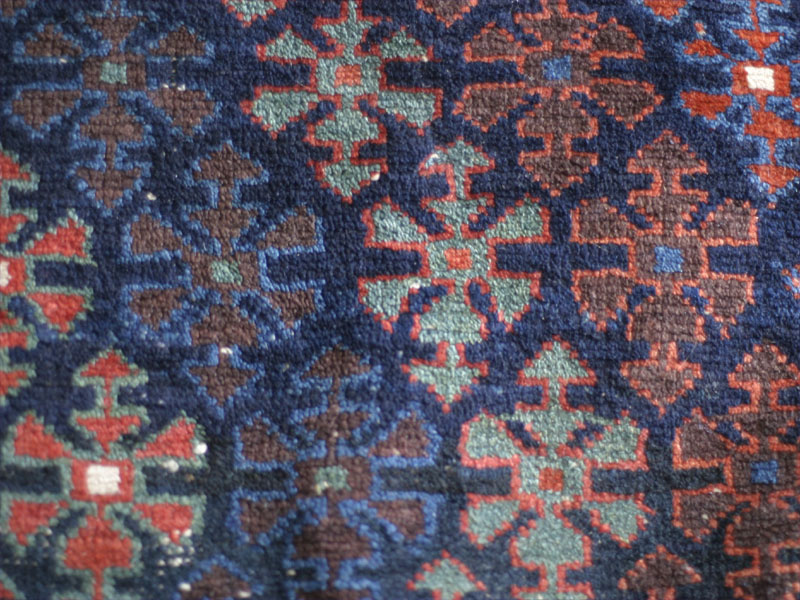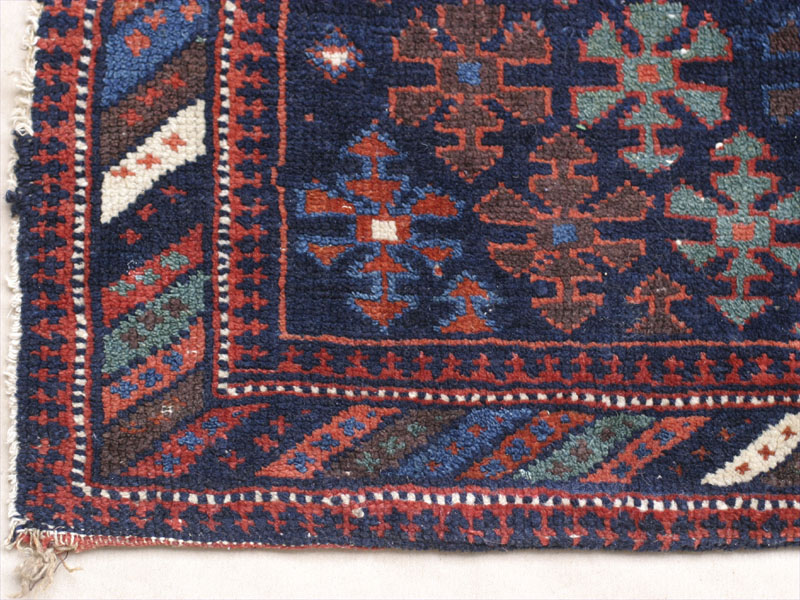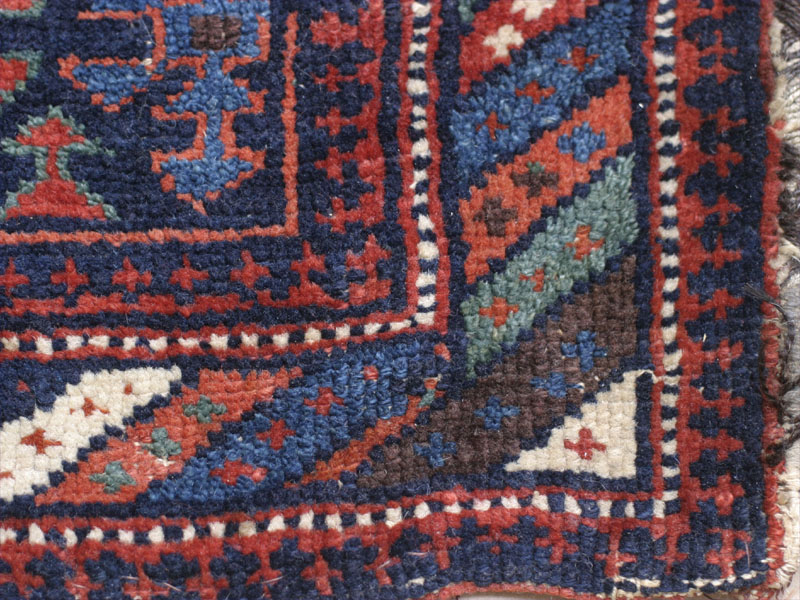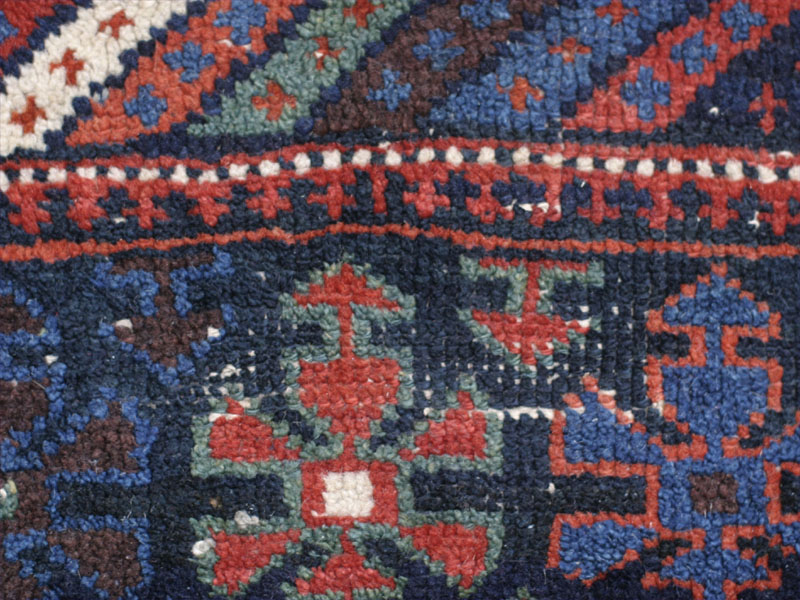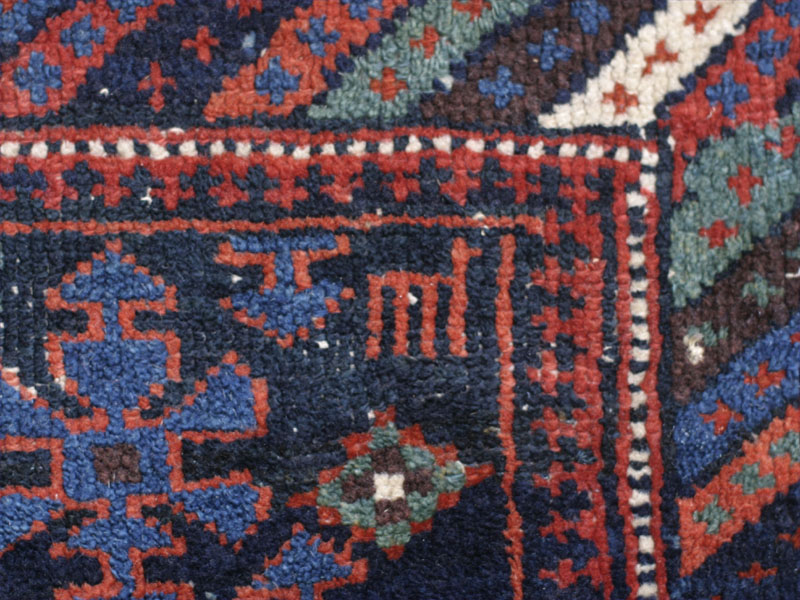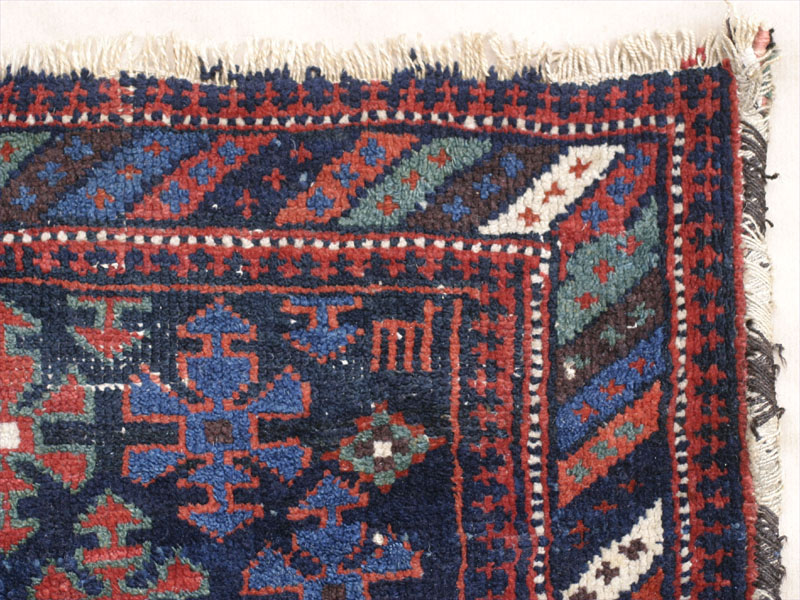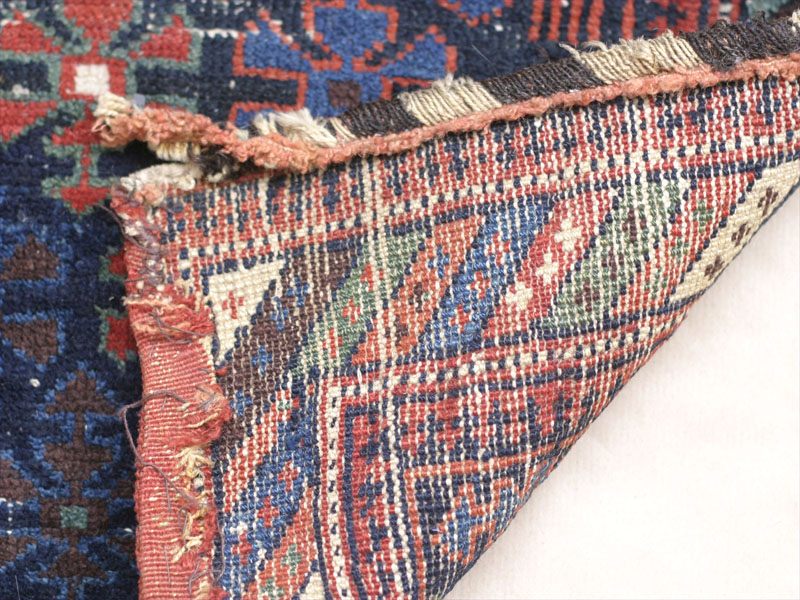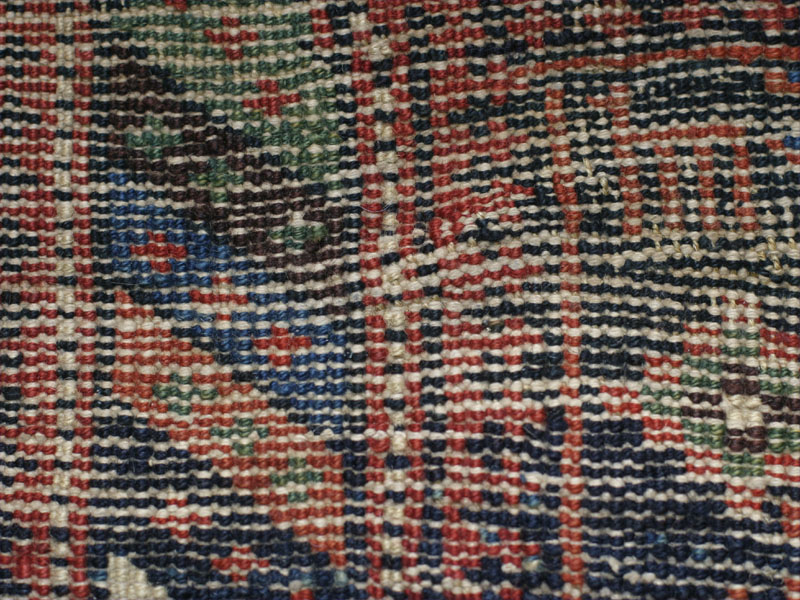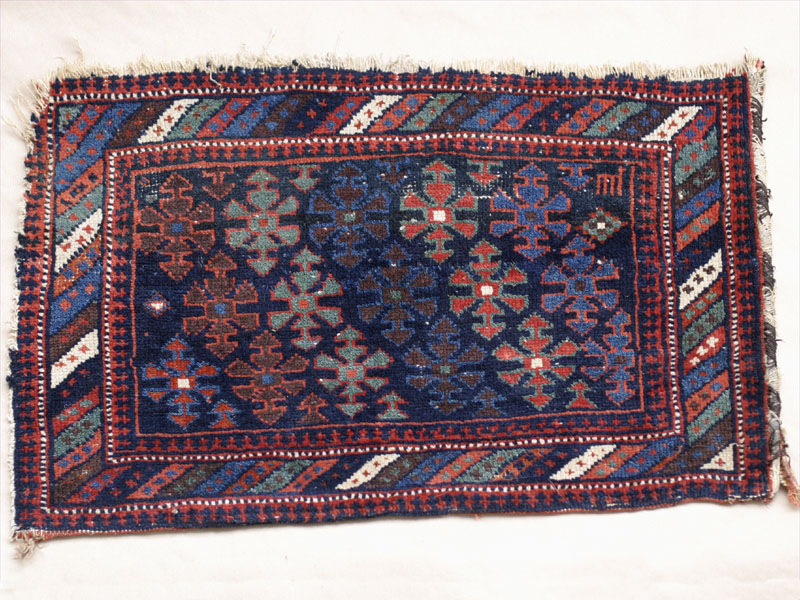
Set within a pretty and simple border of diagonal stripes, there is an endless repeat pattern of geometric ornaments in diagonal rows with various combinations of fill and outline colour on a dark blue abrashed ground. The field ornament looks like it is derived from flatweaves, it may represent a simplified palmette. Variants of this design occur in Ashar and Shasavan weavings but also in Kurdish work. Some filler motives incl. a tiny animal at the edges and corners.
The weaving shows charming irregularities, both in the slightly irregular shape and the way the border stripes fail to meet in the top-left and bottom-right corners. Another thing you may notice is the change of direction of the rows of ornaments right at the end of the field. All this supports a tribal origin.
The bagface measures 75 x 46-48 cms (29.5 x 18-19 inch). Turkish (symmetrical) knots, density 8 knots horizontal x 10 knots vertical per inch (80 kpsi). The weave is slightly depressed. Warps are z-spun s-plied bristly ivory wool with some brown threads. Wefts consist of 2 or 3 shots of ivory cotton. The weave pattern is somewhat irregular, especially at one side where some rows seem to merge, which accounts for the irregular shape (see detail photo of the back). The double overcast of the remaining selvage is quite bristly, could be goat hair.
The colours clearly look all natural dyestuff and are deeply saturated. (Pictures were taken with a Canon 10D digital SLR in daylight - overcast sky - and not altered). I count six colours: Dark indigo and medium blue indigo, a warm madder-based orange brick-red, a beautful blueish medium green, a warm dark brown (perhaps brown wool overdyed with madder), and undyed ivory wool.
Very good and lustrous pile, somewhat lower on one end of the field. In a few areas isolated spots of weft are visible. One of the original selvages wrapped in brown and ivory wool remains, though beginning to unravel at one end. Slight corner loss at the other side. Very slight loss (1-2 rows at the bottom) should be secured with stitching. A the top, an inch or so of the brick-red flat weave of the back of the bag remains sown to the back of the front panel with a few stiches. Handle is supple but somewhat stiffer than that of rugs with an all-wool foundation.
There are no repairs/reweavings as far as I can see. The bag face is clean, no rot or odour.
I am simply not sure about the origin. Opinions of knowledgable people I have asked seem to vary. I believe the bag face is from the Afshar tribe of NW Persia, which would account for the Kurdish influence. According to the palette and the striped border it could be pass as Kurdish work perhaps from the Genje area. The weave however (slightly depressed), the field motive and the overcast in ivory and dark brown goat hair point to an Afshar origin. The good colours and the tribal appearance point to an age of late 19 c. or early 20 century.
